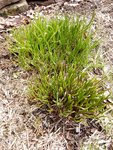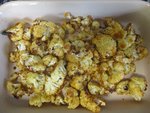 Narrowsburg
NarrowsburgLight Rain Fog/Mist, 43°
Wind: 8.1 mph
 Narrowsburg
NarrowsburgWhen my sister, Janet, and I were in Mexico a couple months back, I heard her tell a Californian we had befriended that the season after winter in upstate New York is mud. It certainly seems an …
Stay informed about your community and support local independent journalism.
Subscribe to The River Reporter today. click here
This item is available in full to subscribers.
Please log in to continue |



When my sister, Janet, and I were in Mexico a couple months back, I heard her tell a Californian we had befriended that the season after winter in upstate New York is mud. It certainly seems an appropriate description as I am writing this is in early April. Someone coined the phrase “April showers bring May flowers,” and the saying is interpreted as upbeat and promising, as though we should forge forward with anticipation, while our footwear is sunk in sludge and caked with mud that seems to get into every crevice of boot and sneaker, and then drops, when hardened and dried, on the kitchen floor in tiny increments that crumble into fine brown dust when inadvertently stepped on. As March turned into April the weather was not only wet and grey, but the chill in the air wouldn’t abate. I am longing for the days when we won’t have to have the heat on in the house around the clock.
Thus, it came as a sweet surprise when I was heading toward the stairs of the front porch recently and happened to look down into my garden that abuts the house. There was a patch of bright green: my chives, standing a couple of inches tall in striking contrast to the dull earth. Then I noticed a half a dozen shoots of tulip-leaf clusters. Perhaps spring will eventually come my way, I thought. At the supermarket that day I saw neat bunches of asparagus, which have still not made an appearance at the local farmers’ market, but which I know are due any day. I bought a bunch and brought them home to serve with pork chops.
These days, I have avidly embraced a way of cooking most vegetables: to oven-roast them at a high temperature. With the weather continuing to be blustery, I look forward to turning the oven to 425°, as the heat emanating from the stove warms the kitchen until it’s toasty.
Every Thanksgiving, for years, I eschewed mashed potatoes and baked sweet-potato casseroles for recipes I developed using roasted root vegetables. I served honey and balsamic-glazed carrots and parsnips, or autumn vegetables with rosemary and thyme, drizzled lightly with maple syrup. Now, in the last couple of years, I have turned to oven-roasting all kinds of vegetables, particularly those in the cruciferous family (whose flowers of four petals resemble a cross), such as cauliflower, Brussels sprouts and broccoli. In their simplest form, drizzled with good olive oil, sea or Kosher salt and freshly ground black pepper, their edges turn golden and crispy, their innards crunchy, and a depth of flavor develops that makes a steamed version pale.
With a little imagination, and the addition of a few ingredients (such as lemon zest, spices, or herbs) oven-roasted vegetables can be stupendous. To my roasted-vegetable repertoire, I have added green beans with lemon zest and caramelized, crispy shallots; asparagus with lemon zest and grated Parmigiano-Reggiano cheese; broccoli with any number of spices and herbs (most successfully with the spice company Penzeys’ Turkish seasoning blend) and, finally, the latest concoction: cauliflower with spices culled mostly from India. I dry-roasted and then ground cumin, coriander, and fennel seeds; added a sprinkling of Hungarian paprika, salt, and pepper; and tossed the spices with the cauliflower and olive oil in a big bowl. Onto a rimmed jellyroll pan it was spread evenly, and in less than half an hour I had a most exotic vegetable side dish on the table.
Perhaps the oven-roasting method will be put on the back burner if the weather ever warms enough, but then again, I’ve been known to blast my oven for a beloved dish during a summer heat wave.
Oven-roasted cauliflower with Indian spices
Serves 3 – 4
Ingredients
1 medium-large head cauliflower (about 1 pound), trimmed and cut into medium sized florets, equal in size
Extra virgin olive oil, to coat
½ teaspoon cumin seeds
½ teaspoon coriander seeds
¼ teaspoon fennel seeds
½ teaspoon paprika
½ teaspoon Kosher or sea salt
¼ teaspoon freshly ground black pepper
1 small garlic clove, finely minced (optional)
Zest and juice of 1 lemon
Preheat the oven to 425°. In a large bowl, toss the cauliflower florets with extra-virgin olive oil. This will take a few tablespoons, as you want to coat the cauliflower well. Set aside. In a small non-stick skillet, place the cumin, coriander and fennel seeds. Heat the skillet to medium-low, and toast the seeds, shaking the pan occasionally until they release their aroma, about 2 minutes. Pour the seeds into a small bowl and let cool a few minutes, then crush them well in a mortar and pestle. Add them, along with the paprika, salt, pepper, and garlic (if using) to the bowl with the cauliflower and toss well to coat. Lay the cauliflower pieces on a large jellyroll or rimmed baking sheet, making sure they are in one layer and have a little space between pieces. Bake, turning once or twice, until lightly colored and tender, about 20 – 25 minutes. Remove the baking sheet from the oven and turn on the broiler. Add the lemon zest and juice, making sure to evenly coat cauliflower. Place the baking sheet under the broiler for about 1 minute, until cauliflower is a little charred and crisp. Serve immediately or at room temperature.
Comments
No comments on this item Please log in to comment by clicking here